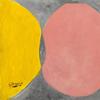Hope Diamond Goes on Display for the First Time Out of Its Setting
- WASHINGTON, DC
- /
- September 24, 2009

To mark its 50th anniversary at the Smithsonian’s National Museum of Natural History, the renowned Hope Diamond is displayed for the first time as a stand-alone gem, with no setting at all. Although removed from its setting on rare occasions for research and cleaning, it has never been on public view as an unset gem.
The stand-alone diamond will remain on exhibit in the museum’s Winston Gallery in the Hall of Geology, Gems and Minerals while a new temporary setting is fabricated for display in April 2010. The new setting, one of three designed by Harry Winston Inc. and the winner of a vote held online at www.smithsonianchannel.com, was revealed at the museum today.
“Not only is the Hope Diamond one of the rarest gems in the world, it is also one of the most popular objects in the entire Smithsonian collection,” said Cristián Samper, director of the museum. “We’re thrilled that the public was able to participate in this anniversary by choosing a new temporary setting and that they also have this once-in-a-lifetime opportunity to view the diamond as it has never been seen before.”
The unveiling of the diamond in its new setting next spring will coincide with the premiere of Smithsonian Channel’s “Mystery of the Hope Diamond” documentary—a high-definition documentary about the full story of the diamond, from its origins to its mysterious journey through Europe and its final home at the Smithsonian.

“The Hope Diamond is the ultimate conversation piece,” said David Royle, executive vice president for programming and production at Smithsonian Channel. “Its story reads like the quintessential novel with human tragedy, a curse, greed and celebrity all part of its extraordinary tale. Smithsonian Channel is proud to celebrate this wonderful one-of-a-kind gem with a special that will add new layers to the history of the world’s most illustrious jewel.”
Since 1912, the 45.52-carat diamond has been in a platinum Cartier setting, surrounded by 16 white pear-shaped and cushion-cut diamonds, suspended from a chain containing 45 diamonds. The diamond will return to this historic setting in late 2010.
“The Hope Diamond is the most famous gemstone in the world,” said Jeffrey Post, curator of the National Gem and Mineral Collection at the museum. “It is prized as one of Earth’s unique creations and beloved for its beauty. But until now, it has never been displayed out of its setting. For our millions of visitors—and for people throughout the world—viewing the Hope Diamond as an individual gemstone will be an extraordinary and memorable experience.”
The Hope Diamond is renowned for its nearly flawless clarity, rare deep-blue color and eventful history. It was formed more than a billion years ago 90 miles below the Earth’s surface. The diamond was brought to the surface by a volcanic eruption and was discovered in the 17th century in a mine in Golconda, India. The rare blue color of the jewel is attributed to light interaction with a trace impurity of the element boron in the diamond’s internal atomic structure.
In 1668, Jean-Baptiste Tavernier, a French gem merchant, sold the diamond to King Louis XIV of France. During the French Revolution it was stolen, and subsequently had many owners, including King George IV of England and Henry Philip Hope, whose name it bears today. In 1958, its last private owner, Harry Winston, donated the diamond to the Smithsonian, where it remains today. It has been on view in the National Museum of Natural History for the past 50 years.
The Smithsonian’s National Museum of Natural History, located at 10th Street and Constitution Avenue N.W. in Washington, D.C., welcomed more than 7 million visitors in 2008. The museum is open daily from 10 a.m. to 5:30 p.m. Admission is free. More information about the museum is available at www.mnh.si.edu or by calling (202) 633-1000, TTY (202) 633-5285.
To access b-roll footage of the Hope Diamond, click here: http://192.238.64.139/video/Hope_Diamond_press_Kit.mp4.
# # #
Contact:
Kelly CarnesThe Smithsonian Institution
(202) 633-2950
(202) 633-1000
http://www.smithsonian.org
About National Museum of Natural History
The Smithsonian's National Museum of Natural History is the most visited natural history museum in the world and the most visited museum in the Smithsonian complex. (There were more than 7 million visits to the museum in 2007.) Opened in 1910, the museum on the National Mall is dedicated to maintaining and preserving the world's most extensive collection of natural history specimens and human artifacts. It also fosters significant scientific research, as well as educational programs and exhibitions that present the work of its scientists to the public. Cristián Samper is the museum's director.
















